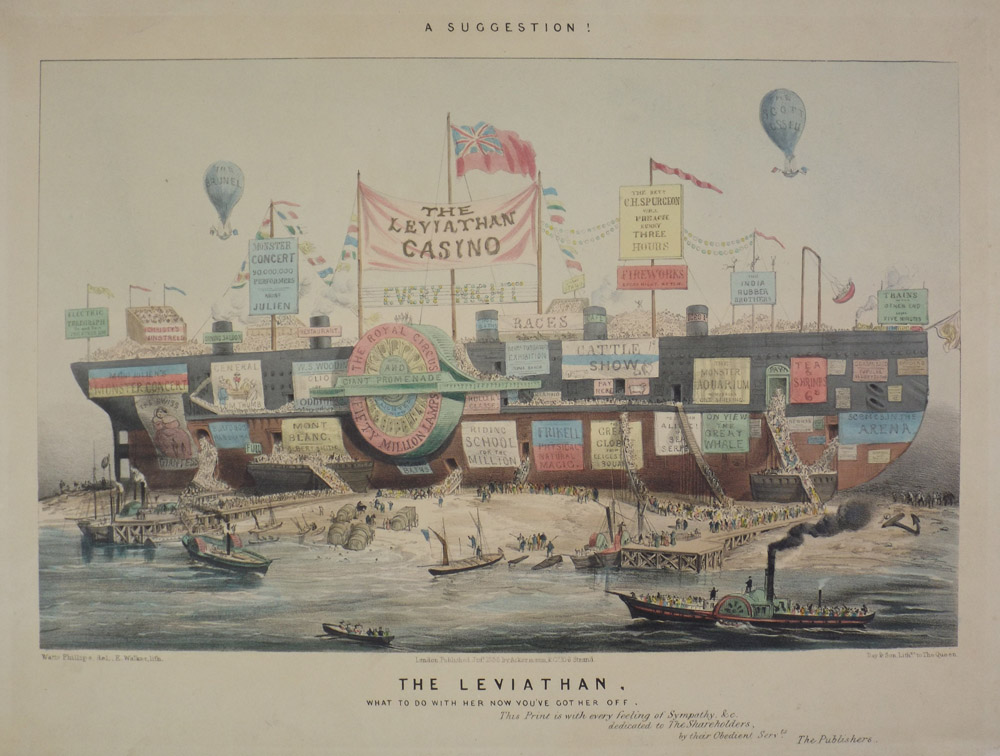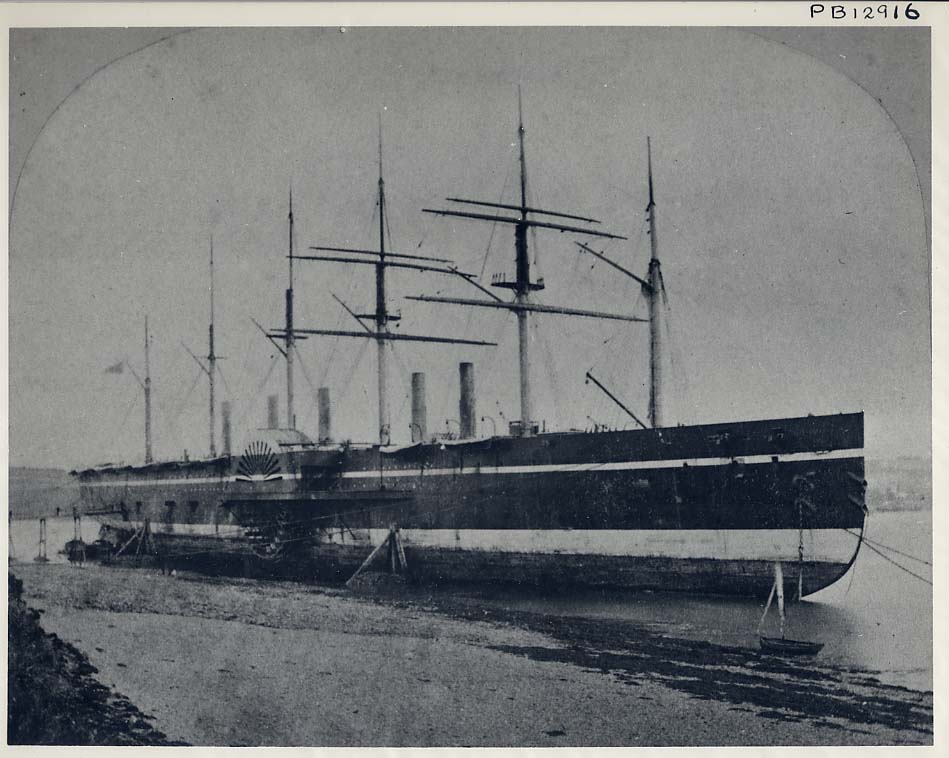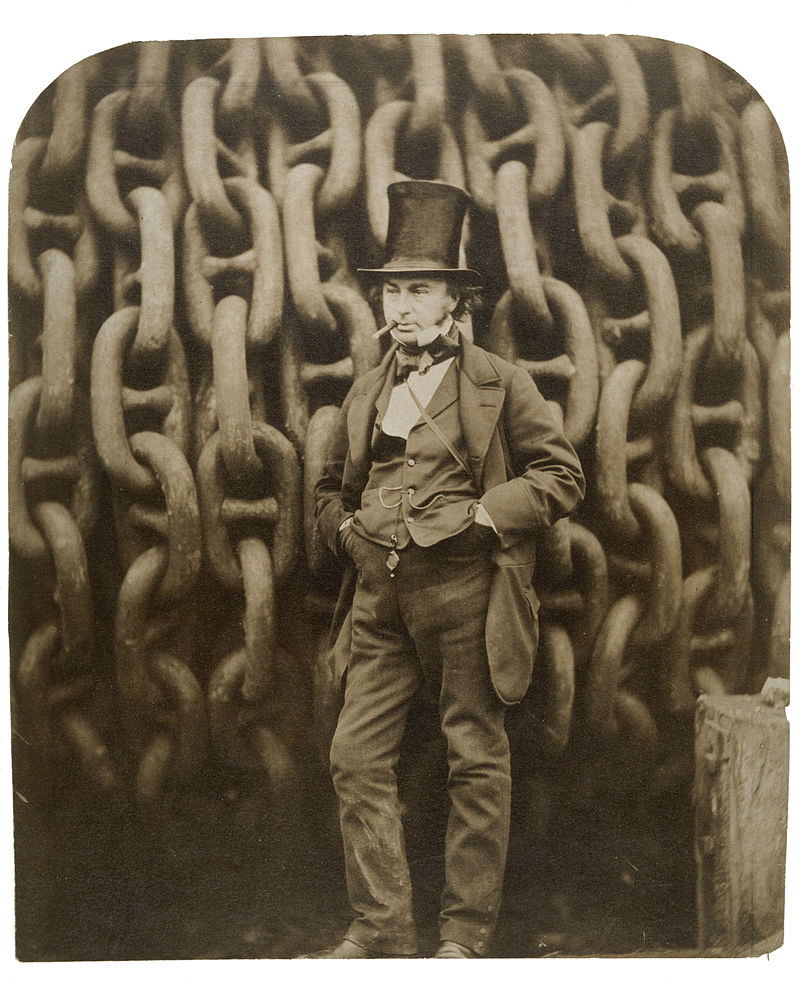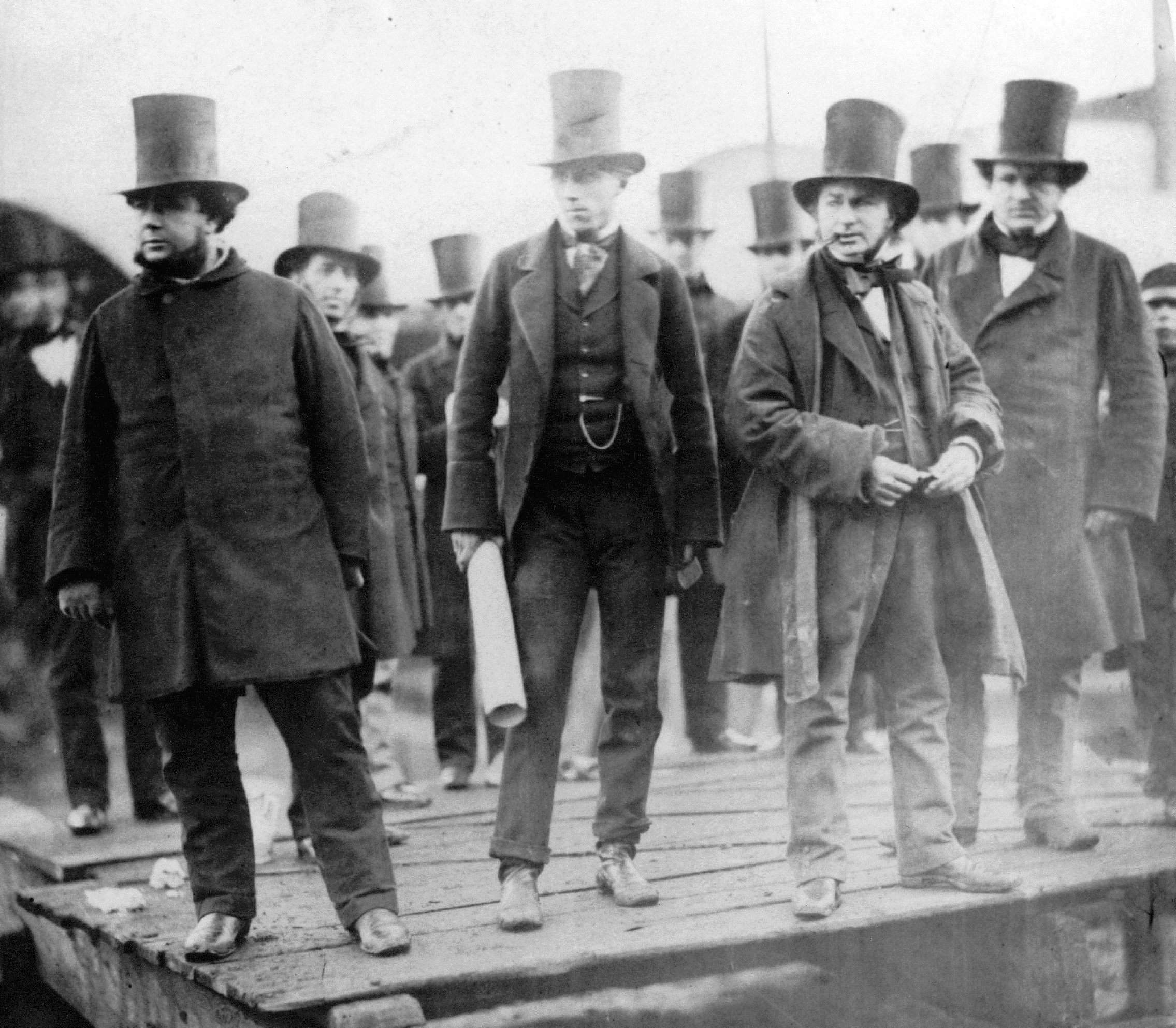As I continue to comb through and photograph our print/poster collection, I am constantly finding pieces that depict incredibly interesting bits of history. In most cases, bits I never even knew existed, which spurs me to research and learn more. One print I found earlier this week shows the steamship Great Eastern (1858-1888) on a sandbar covered in advertisements for all kinds of activities available on board, including horse races, a concert and the Swiss Giantess. It’s quite amazing to look at and so I decided to make it the artifact of the month for October.

And if you look closely at the print, you can see that there are a massive amount of people on the ship with tons more trying to board. When I find something like this I just have to know more and understand the purpose behind it.
Great Eastern was the brain child of Isambard Kingdom Brunel, who was famous for his work on the railway, but decided to get into the steamship designing business in the 1830’s. His first work was designing Great Western, followed by Great Britain, both considered successes. It was then that Brunel set his sights on building a third ship, one that would be the largest ship of its time (and indeed would remain the largest for a significant number of years to come) and would be used for voyages to and from India and Australia. The reason to make the ship so massive is so that it could carry a significantly larger amount of coal and not have to make many (if any) stops along the route to reload, which was a problem with most of the contemporary ships. The Eastern Steamship Navigation Company was formed to carry out this project.

Unfortunately, there were problems from the very beginning with the construction of Great Eastern (originally to be named Leviathan). Construction began in 1854 in London at the shipyard owned by John Scott Russell and Company, who had previously worked with Brunel. The project was so large that it caused Russell to go bankrupt, which delayed work on the ship for a time. Brunel’s health was failing and the financial burden certainly didn’t help.


The original launch date was set for November, 1857, and a great many spectators arrived to watch. The launch was a failure, one that cost the company dearly. Work to get the ship launched continued for three months until finally, with the use of hydraulic rams, they managed to get Great Eastern into the water in July of 1858. And this brings me back to the print in our collection. Apparently Great Eastern was the butt of a few jokes because of the trouble caused when trying to launch her. If you look at the balloons above the ship you can see that one is named The Brunel while the other is The Scott Russel. I believe the print also refers to the fact that another problem facing the ship was the lack of docks that she would be able to stop at because of her sheer size. Docks then weren’t built to handle ships that large. It’s a shame because what Brunel was able to accomplish was amazing, but the world then just wasn’t ready for it.
It was published in January of 1858, right around the time of the successful launching, by Ackerman & Co. The illustration (and I believe the note to the shareholders) was done by Watts Phillips (1825-1874) who was an illustrator as well as novelist and playwright.
Although that is where the story of the print ends, it is not where the story of Great Eastern ends. In September of 1859 she made her maiden voyage and was visited by more tragedy. One of the paddle engine boilers exploded, killing six of the crew. It did not destroy the ship though, and she was fixed and sent back to sea. She never made the voyages to the East that she was built for, but starting in 1860 she made transatlantic voyages. In 1864 she was sold to a group wanting to use her to lay cables. Although she never reached the fame that everyone hoped for as a trade/passenger vessel, she will always be known as the vessel that laid down the first telegraph cable to America, which is no small feat. In 1888 Great Eastern was finally sold to be scrapped, which took well over a year due to her massive size.